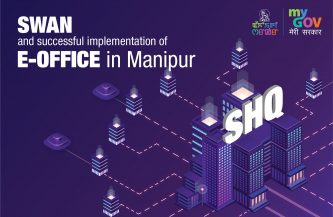“Digital India” infrastructure paves the way for the innovation of the future of Fintechs in the world

[Blog by: Arif Khan, the Chief Digital Officer, National Payments Corporation of India (NPCI).]
Public investments in research and development in critical areas have helped innovative and successful countries acquire the capability of learning from practice. All of us are involved – rich or poor, large or small as a participant in the digital public infrastructure of the country. India plans to double its economy to $5 trillion in the next five years. India has made numerous efforts to become more digital in recent years. The Digital India Mission focuses on improving effectiveness, building trust, and ensuring information security. Building digital trust is significant for society, commerce, and individuals using digital services.
Together with the Government of India, all the ecosystem players have built strategies and approaches and are continuously striving to attain the goal of ‘Digital Payments for All’ by partnering with players across the ecosystem. Digital payments have provided opportunities, efficiency, transparency, and convenience to the consumer and now present a huge growth potential for the industry, with the country gearing towards massive adoption. Tools like UPI and RuPay provide an unparalleled opportunity for every country. An opportunity to provide a low-cost and reliable ‘real-time payment system’ as well as a ‘domestic card scheme’ and ‘fund remittance system’.
Transformational initiatives under Digital India have opened doors for Fintech innovations to be applied in governance. The Indian Financial Services sector has adopted the India Stack and similar digital public goods. Fintech development is backed by a system of monitoring risks and regulatory impacts, lowering investment barriers, tax incentives, and regulatory support for the industry. There are more than 2100 Fintech companies in India, out of which more than 67 percent were founded since 2005. Fintech in India has seen exponential growth in funding; in 2021, investments worth over USD 8 billion were received.
India’s Fintech revolution in the last decade was driven by several supply-side factors, such as exponential growth in computing power, affordable smartphones, the proliferation of the internet, faster and more reliable internet access, expanded financial services via India stack, increased customer demands for faster, safer, and more reliable services. So the primary question is what will drive innovation by Fintech in the next decade; some trends are emerging like:
- Artificial Intelligence:Artificial intelligence can help organizations grow revenues by personalizing services to their customers (and employees); lower costs by automating workflows, reducing errors, and improving resource utilization; and uncover previously unrealized opportunities by better processing and analysing vast amounts of data.
- Blockchain-enabled infrastructure: Through blockchain’s decentralized network of trust, a large number of stakeholders can engage in secure data exchanges, financial transactions, and other multi-party business processes without requiring centralized clearing houses, which can add cost, friction, and a single point of failure to markets that increasingly value stakeholder agility and sovereignty.
- IoT-driven services: Through a vast network of web-enabled devices that collect and share data, IoT plays various roles: It will simplify debt collection by monitoring supply chain activity via sensors and networks; it will enhance fraud protection by utilizing on-site security systems that sense all network connections and potential connections.
- Smart wearables: Wearables in FinTech are poised to increase productivity and efficiency by enabling real-time decision-making on the back end. Additionally, wearables can assist entrepreneurs in solving critical problems and designing services that offer clients fascinating user experiences.
- Digital twins to replace physical assets: They are virtual replicas of physical objects and devices used to simulate the behaviour of real devices before they are designed and deployed. A digital twin can act anything, including wind farms, jet engines, and entire cities. Fintechs can collect data from digital twins to help predict future events.
- AR/VR driven services via metaverse: Fintech firms have the unique ability to bridge the trust gap that has traditionally prevented more comprehensive adoption of services such as digital ID, digital payments, or custody of Non-Fungible Tokens and other digital assets through virtual interactions and play areas for their customers.
- Protocol over platform:When platforms are more converged, and protocols are adopted, Fintech services can become more interoperable, reducing interactions and costs.
Indigenous digital services, platforms, applications, content, and solutions will transform the Indian digital ecosystem. India’s economic value could be fivefold by 2025 if it invests in emerging technologies (like AI, blockchain, and drones). With platforms like Account Aggregator and ONDC (Open Network for Digital Commerce), FinTech companies are poised to go beyond just solving systemic problems, catering to customers’ preferences, and simplifying lives.
Together as a nation, we are poised to be one of the pioneering forces to be reckoned with in the digital payments industry. Digital payments solutions in India have created opportunities for a financially inclusive society and pave way for more innovative products and services to strengthen digital payments transactions. The mass adoption of India’s digital payment solutions is just the beginning of a new chapter in the financial payments history and there is a lot to be done by providing citizens with new mediums to pay electronically and move towards a cashless society.
[About Author: Prior to joining NPCI, he was associated with entities such as RazorPay and HDFC Bank wherein he has worked extensively in driving strategic initiatives in payments, digital banking, and financial inclusion.]

















